You’ve probably heard or read the word blizzard a few times in the last few weeks. Just recently, the Northern states and East coast were hit with a blizzard, as well were numerous Midwestern states. Though many believe that a blizzard just involves a heavy amounts of snow, this is not the case by definition. A blizzard is a storm that brings about very low temperatures, high winds, and lots of blowing snow. Along with blizzards usually come white outs, snow drifts, lowered visibility, and of course, a lot of snow shoveling. So bundle up and get warm, here are top 10 worst blizzards in U.S History.
10. The Great Blizzard of 1899
February 11 – 14, 1899; 0 deaths
Lasting about four days, this storm brought along not only that white mess, but also record low temperatures, some that still stand today. The storm mostly affected the southern portion of the U.S. including Tampa, FL, New Orleans, and even Washington, D.C. Surprisingly, this storm was more focused in the South then it was in the North or Midwest, which is usually more commonly seen. As the storm made its path along Florida, it picked up energy and vapor from the water, allowing for ocean-effect snow.
Once the storm picked up speed and headed east, it set record snowfall as well as record low temperatures. In Fort Logan, Montana, the recorded temperature was around -61°F and in Monterey, Virginia, -29°F. In Cape May, NJ, about 34 inches of snow fell, and 20.5 inches of snow in Washington, D.C. The storm caused no reported deaths. But by the end of it all, Cuba reported heavy frost which ruined some agriculture and the port of New Orleans looked like a winter wonderland.
9. The Great Storm of 1975
January 9 – 12, 1975; 70 deaths
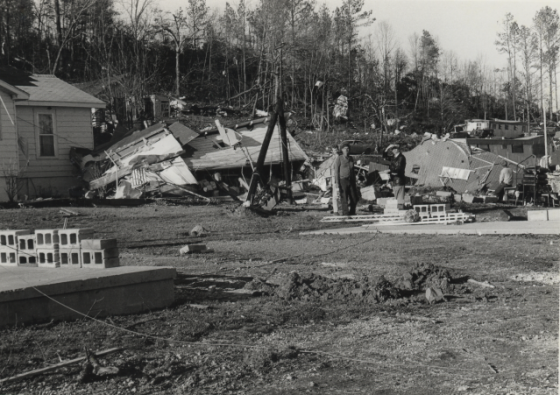
This blizzard is definitely one that many won’t forget. Sometimes referred to as the “Super Bowl Blizzard,” this storm is not like most you’ll find on the list. Not only did this blizzard bring about massive amounts of snow, it is also said to have caused over 45 tornadoes in the southwest, as well as record high temperatures in locations such as Indianapolis and Chicago.
Mixing in with cold arctic air from the Rockies north and moisture coming from the Gulf of Mexico, this storm produced about a foot or two of snow ranging from Minnesota to Nebraska. Not only did the snow fall heavy, but the winds were heavy as well, sometimes gusting between 30-50mph, which then created 20 foot snowdrifts. In the end, 70 people were left dead; 12 from the tornadoes and 58 due to the snow.
8. Blizzard of 1999
January 2-4, 1999; 73 deaths
For some time, the Blizzard of 1999 was named the second worst blizzard to hit the Midwestern states in the 20th century by the National Weather Service after it dropped 22 inches of snow at Chicago’s O’Hare airport. The storm hardest hit states including Michigan, Ohio, Indiana, Wisconsin, Iowa, Illinois, as well as provinces in Canada, mainly Ontario and Quebec. Most of these areas got at least a foot of snow, some of them more.
In Chicago, on the first day alone, 18.6 inches of snow fell, which is a set record in the books. It is said that temperatures in some locations reached a record low of -20°F. Sadly, the storm also brought about 73 deaths, 32 of them from shoveling snow, which can cause heart-attacks due to over-exertion in the body.
7. The Knickerbocker Storm
January 27 – 28, 1922; 98 deaths
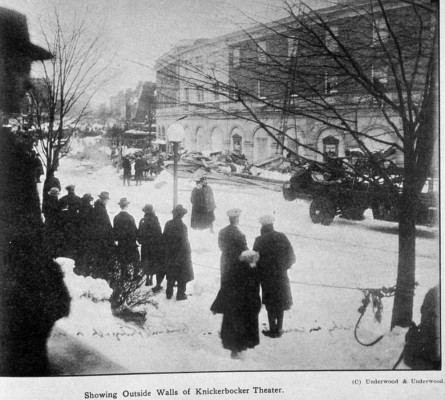
Named after the Knickerbocker Theater in Washington, D.C. that collapsed during the blizzard, this storm affected most of the northeastern states including Pennsylvania, Maryland, and Virginia. It’s estimated that about 22,400 square miles of land were affected by the storm, many of them receiving two to three feet of snow, with temperatures lingering around 20°F.
With the snow building up quick, it’s no wonder that a roof collapsed during the storm, but unfortunately it was the roof of the Knickerbocker Theater, which was the biggest and newest movie theater built in D.C. at the time and was always crowded with movie-goers. More unfortunate is the fact that the collapsed roof caused 98 deaths and more than 133 injuries as the balcony and brick walls buried people alive.
6. Armistice Day Blizzard
November 11 – 12, 1940; 154 deaths
Another storm located in the Midwest, the Armistice Day Blizzard brought about snow, but also wind gusts that would definitely send a chill up your spine. Encompassing Minnesota, Wisconsin, Michigan, Nebraska, and South Dakota, the storm brought up to 27 inches of snow to some locations, accompanied by 80mph winds and 20ft. snow drifts. As if the winds weren’t enough, temperatures were said to drop a sharp 50 degrees.
Because mid-November is known as duck hunting season for many, 25 hunters died because of the storm due to lack of preparation. It is also said that 66 sailors died on Lake Michigan, as well as other deaths with equaled a total of 154.
5. The Schoolhouse Blizzard (The Children’s Blizzard)
January 12, 1888; 230 deaths
One of the most tragic blizzards on this list, the Schoolhouse Blizzard was so deadly because it came unexpectedly during a warm day. Because of this, many people who ventured outside weren’t properly dressed for the arctic weather that was on the way. When the arctic air mixed with air that was packed with moisture from the south, blizzard conditions were created extremely quickly, causing temperatures to drop from above freezing to -40°F in the course of the same day.
Because so many people were out and about, namely school children, a lot of them were caught in the blizzard and died of hypothermia. Many teachers in one-room schoolhouses decided to send children home, while others were kept in the school. By the end of the storm, about 230 people, most of them children, were dead.
A book was written named The Children’s Blizzard documenting this tragic event.
4. The Great Lakes Storm of 1913
Nov 7 – 10, 1913; 260+ deaths
Today, the Great Lakes Storm of 1913 stands as the deadliest natural disaster to ever hit the Great Lakes region. Causing over 250 deaths, the blizzard came in with tremendous strength that was highly unpredicted by weather forecasters. With whiteouts causing travel to slow on the roads, winds reaching between 60-90mph on the lakes also caused unforeseen problems. It is said that the storm destroyed 19 ships, stranded 19 more, and left many sailors dead, due to lulls and huge waves that reached over 35ft.
On Lake Superior 43 sailors were killed, 7 on Lake Michigan, 199 on Lake Huron, and 6 on Lake Eerie. Looking at the storm today, many forecasters are astounded at how long the blizzard pounded these regions. It’s said that storms of this strength usually only last 4-5 hours, but this one stuck around for about 16.
3. The Storm of the Century
March 11 – 15, 1993; 300 deaths
This storm is definitely one that will be remembered. Not only was it a blizzard, it created heavy rains, winds, and tornadoes. Some call it the White Hurricane, simply because of its characteristics. When meteorologists looked at satellite images of the storm, it was clear that it would be huge. At its strongest point, the weather system went as far north as Canada and as far south as Central America. Despite its wide range, the storm’s havoc remained focused on Cuba and the Eastern portion of the U.S. Some states received more than a couple feet of snow while others had to deal with about 6 inches, but Mount Le Conte, TN totaled in with the most, getting 60 inches of snow.
The heavy winds were focused more in the south, especially in southern states and Cuba where the winds were compared to those of a hurricane, which eventually created tornadoes. By the end of it all, 300+ people were killed due to the strength and widespread energy of the storm.
2. The Great Appalachian Storm of 1950
November 24 – 30, 1950; 353 deaths
It is said that the Storm of 1950 was so bad due to the already standing conditions caused by La Niña. The blizzard brought along snow, and extremely heavy winds, one of the heaviest being reported in Concord, NH at 110mph. Along with these winds was a lot of snow, a few feet in some states. This storm wrecked havoc on many lives and companies, the most notable being insurance companies, who had to pay out more money to those using their services than ever before.
The blizzard was definitely a costly one in more ways than one; killing 353 people, $66.7 million in damages, causing 1,000,000 to be without electricity, and impacting almost half of the U.S., 22 states in total. Photo credit: http://www.weirtonmuseum.com
1. The Great Blizzard of 1888
March 11 – 14, 1888; 400+ deaths
Topping the list is the Great Blizzard of 1888 which brought 40-50 inches of snow to many states, including Connecticut, Massachusetts, New York, and New Jersey. It’s said that the storm wrapped areas from the Chesapeake all the way north to Maine. Along with the heavy snow came snow drifts as high as 50ft because of 45mph winds. Because railroads were the main way of travel during this time, many people were left trapped in their home for weeks because of the horrendous weather conditions.
Conditions were so bad that 200 ships were ruined, causing 100 deaths, as well as massive flooding and fires that could not be extinguished due to the fact that many firehouses were closed. In total, over 400 people died from the storm, and many more were injured.
Other Articles you Might Like
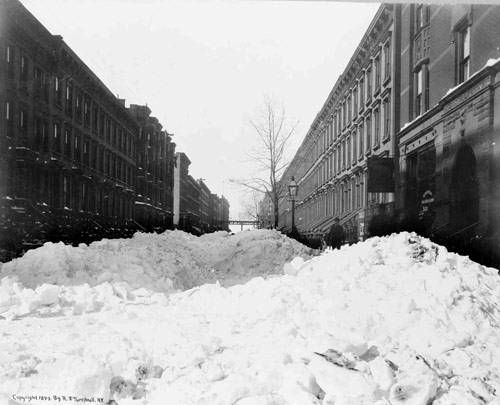
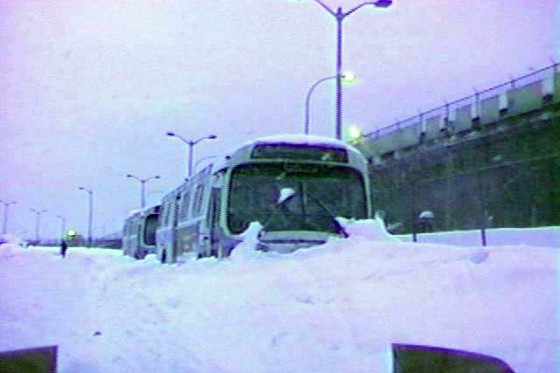
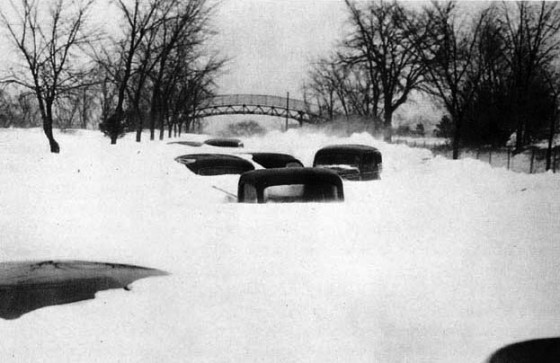
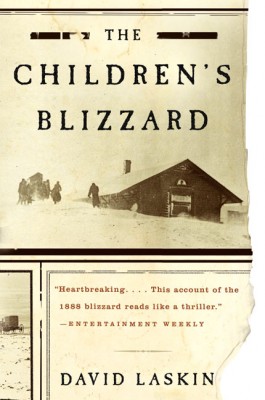
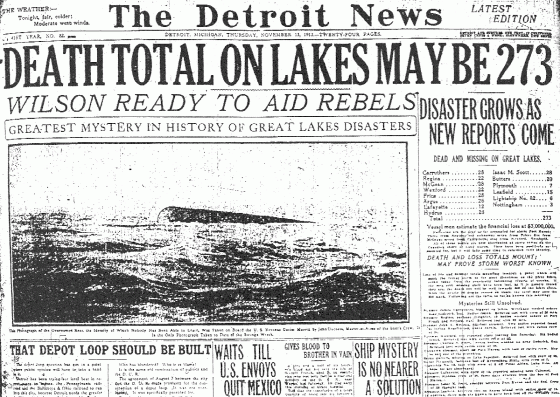
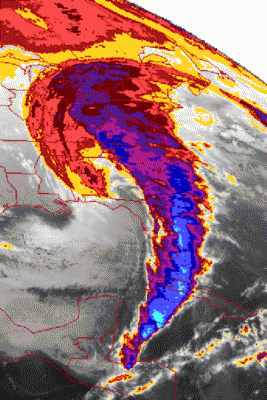
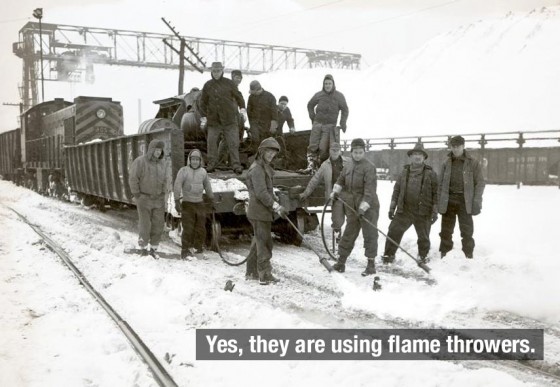
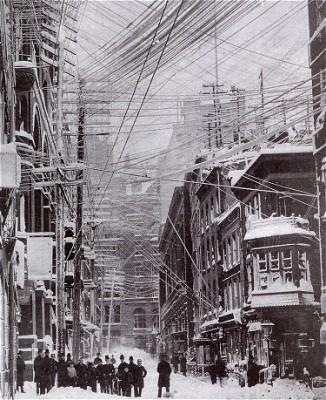
28 Comments
I nominate Winter Storm Stella, March 14-15, 2017. In Binghamton, NY, we had three feet from that storm, shattering our single-storm record by one whole foot!
How could you leave out the 1977 Blizzard in Buffalo, NY or the 1978 Blizzards in Canton, Ohio & the New England States from Top 10 List of the Worst U.S. Blizzards in the last 300 years.
Blizzard of 14. 7 feet in one day no warning in Buffalo, NY. THEN 60 DEGREES two days later making for flooding.
I figured the Blizzard of 1949 would have ranked in the top 10.
Jan 2-5, 1949 Temperature at -10 and winds 50 to 70 mph chill factor -59
Closed 3300 miles of roads in South East WY, Northern CO, Western, NB and South western SD. Snow drifts over tops of houses in the 15 to 20 feet high. Drifts out in the open, on UPRR with some drifts 20-30 feet high.
We seldom see snow floating down, most of our snow is horizontal and sticks to the side of a fence post instead of sitting on top of it.
Yes, we are using flamethrowers. Lol.
what about the 8 foot snowfall in some parts of maine in late december or early january of 1962 or 1963. i lived in east millinocket, maine at the time and we had a continuous snowfall over a 2 or 3 day week-end with some 20 foot drifts in places. the snow plows could not keep up and people were stranded who had been traveling during the holidays. they were put up in various public places such as armory’s or bus depots near bangor and elsewhere.
i remember that storm louise! i lived in boothbay harbor maine at that time it was bad!!!
In the spring of 1977 in the Black Hills of South Dakota, at Oniel Pass, we had a blizzard that dropped 60 inches of snow.
The Perfect Storm Movie event was a Halloween Blizzard which brought 36 inches to Duluth in two days. Awesome it were to be stranded in a hotel with a bar and pool!
This list is about the “worst” in terms of fatalities. So it doesn’t include fun experiences such as the 2007 storm that left thirteen FEET, fallen in under 2 days, in some places north of Oswego, on the eastern shore of Lake Ontario.
And who says that Global Warming does not exist !! HUH !!!
I was kidding when I wrote that.
Thanks this helped, just don’t show the inappropriet stuff on the bottom of the microscoped food page, that almost got me in huge trouble.
How come the strom from 1967 wasn’t in your list? That one dumped 24″ of snow on the midwest and paralyzed the area? Also, another was the storm of New Years Eve 1978. It dumped 20″ in 24 hours also and severely crippled the area.
I see that the blizzard of 1888 was in March. Does anyone know where I could find unusual snow events that happened in October or March or even april?? Thanks
What about the Blizzard of 1977 in Buffalo,NY. This was the first Blizzard to get a declaration of disaster.
What about the blizzard of '76? The highways in the Northeast became so bad people left their cars behind and walked to shelter.
What about the storm of 97 in the Dakotas and Minnesota? Snowstorms kept on coming in right after another. It was a 12 day deal. Afater it was done we had a total of 65 inches of snow. When the storm started we had heavy rain that turned to ice later. There was even a crack of thunder!! 3 People died as a result. I remember it. My parents home in Northern MN was covered in drifts after it was done. Temps got down to -60 and wind chill values down to -120. Good thing the snow covers up the houses to keep them insulated. It was nuts. Another good thing was we had a bobcat skidsteer loader. I am sitting here watching the next storm building in the Pacific that could be devestating.
What about the Chicago blizzard of 1967 when 22 inches of snow was dumped in 24 hours. It shut down the entire city of Chicago, even the snow plows couldn’t get through in many cases.
I think you mean blizzard of ’78. At least that’s when it was here in Massachusetts!
It doesn't seem as though we get those huge blizzards anymore. Maybe it's global warming.
I'm guessing we are also better prepared. Perhaps we have learned from history. If we expanded this list to the world I'm sure we would be more horrified. Many smaller countries don't have the technology and infrastructure to handle disasters as well as the US and other well-prepared countries. And for that I am extremely thankful.
Totally agree with Toptenz Master. As a resident of a smaller country, I don't even want to imagine what would happen if a blizzard hit home. This list was another "cool" one.
if it was global warming, that would only give us more blizzards because then more water would evaporate and make more storms
Yes i agree with some1 awesome
Don’t try to reason with the MORON
well actully this was the coldest winter up here in buffalo so i dont think it was global warming
from ur mom
Yeah…that’s what it must be.